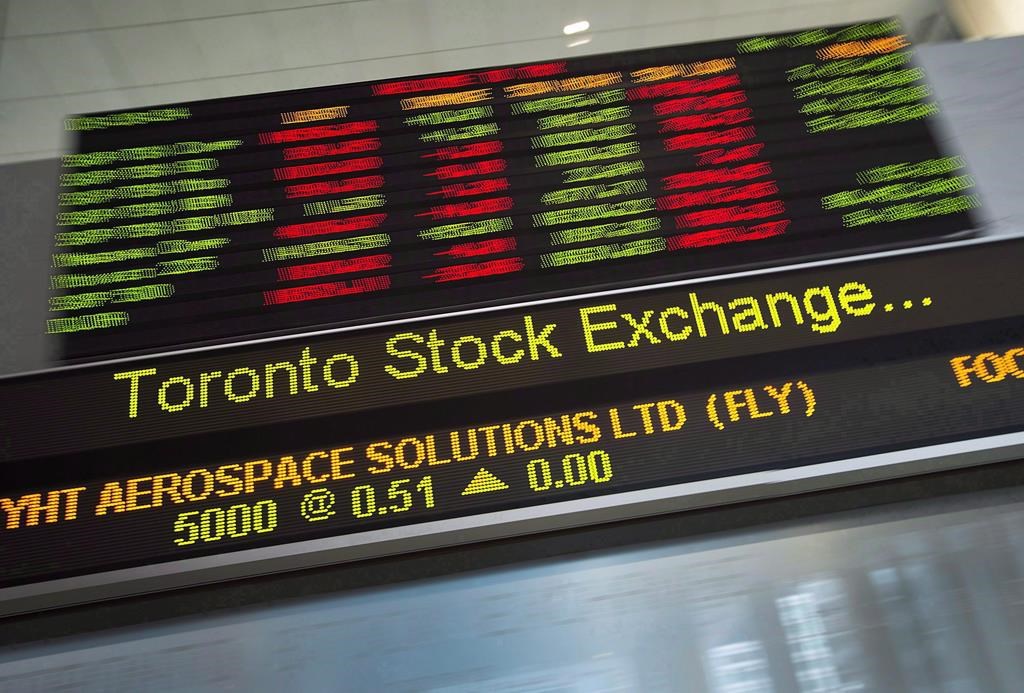TORONTO — North American stock markets ended a volatile week by losing more ground as healthy jobs reports reinforced that central banks would likely continue their sizable interest rate increases.
In Canada, the unemployment rate fell to a record low of 5.2 per cent in April, while 428,000 jobs were added in the U.S. to beat expectations.
The employment reports do nothing to quell expectations that the Bank of Canada and the Federal Reserve will hike rates by another 50 basis points at their next meetings to tackle inflation.
Colin Cieszynski, chief market strategist at SIA Wealth Management, said it used to be that when things were falling apart central banks would ride to the rescue.
“Well, now the narrative is kind of flipped to when anything that comes in good means that the central banks have room to tighten faster,” he said in an interview.
And that worries people because of the impact it would have on slowing the economy and hurting stock markets.
“We’re probably starting to see more of the ones who had stuck it out, stayed optimistic and all the rest of it are now turning to throw in the towel more and more.”
The S&P/TSX composite index closed down 62.89 points to 20,633.28. It staged a rally after hitting an early low of 20,416.38.
It marked the sixth straight week of declines with Wednesday’s positive move more than offset by two days of weakness.
“Even when we do get rallies like we had early in the week, they haven’t been sustainable. The number of people who are looking to sell the rally is more than the number of people looking to buy the dip at this point,” said Cieszynski.
In New York, the Dow Jones industrial average was down 98.60 points at 32,899.37. The S&P 500 index was down 23.53 points at 4,123.34, while the Nasdaq composite was down 173.03 points at 12,144.66.
“It’s a rough finish to a rough week (and) to me it’s still just this whole thing about tightening monetary policy,” he added.
Eight of the 11 major sectors on the TSX were lower, led by technology.
The so-called growth sector has plunged 35 per cent so far in 2022 as bond yields and interest rates have moved higher. On Friday, the 10-year U.S. Treasury rose to 3.136 per cent, its highest level since 2018.
Once Canada’s most valuable company, Shopify Inc. has seen its share prices collapse. It lost another 8.2 per cent Friday after falling 14.3 per cent a day earlier when its last quarter widely missing earnings expectations.
Health care was down 1.9 per cent and materials fell 0.7 per cent even though bullion prices were up on the day.
The June gold contract was up US$7.10 at US$1,882.80 an ounce and the July copper contract was down 2.5 cents at US$4.27 a pound.
The energy sector staged a later rally to move into positive territory as crude prices edged higher on the prospect of the European Union banning imports from Russia.
However, natural gas prices dropped more than eight per cent after climbing to their highest level since 2008 following the release of a report on inventories by the U.S. Energy Information Administration.
The June crude contract was up US$1.51 at US$109.77 per barrel and the June natural gas contract was down 74 cents at US$8.04 per mmBTU.
Shares of Headwater Exploration Inc and Whitecap Resources Inc gained 3.6 and 2.4 per cent, respectively.
The Canadian dollar traded for 77.63 cents US compared with 77.99 cents US on Thursday.
Cieszynski said May is typically not a good month for stock markets and the upcoming U.S. midterm elections will also contribute to volatility.
“So there’s all kinds of things going on, but it’s just a tough time for the markets right now.”
This report by The Canadian Press was first published May 6, 2022.
Companies in this story: (TSX:HWX, TSX:WCP, TSX:SHOP, TSX:GSPTSE, TSX_CADUSD=X)



